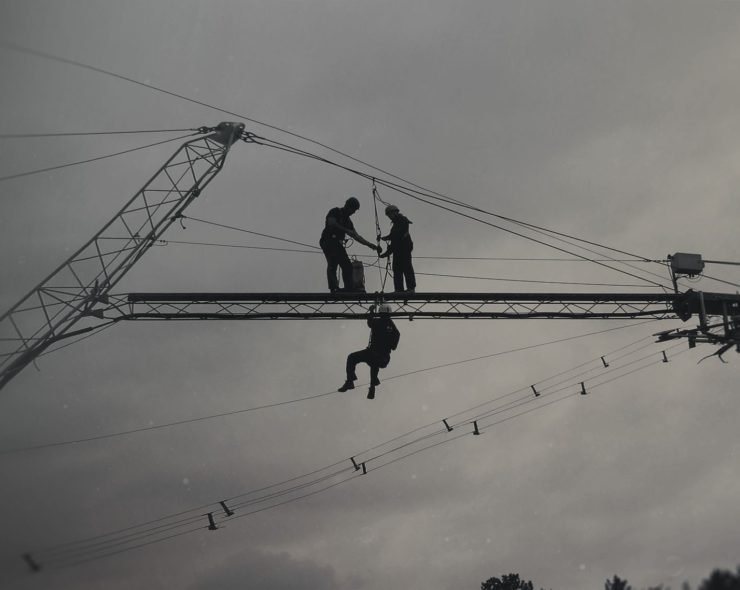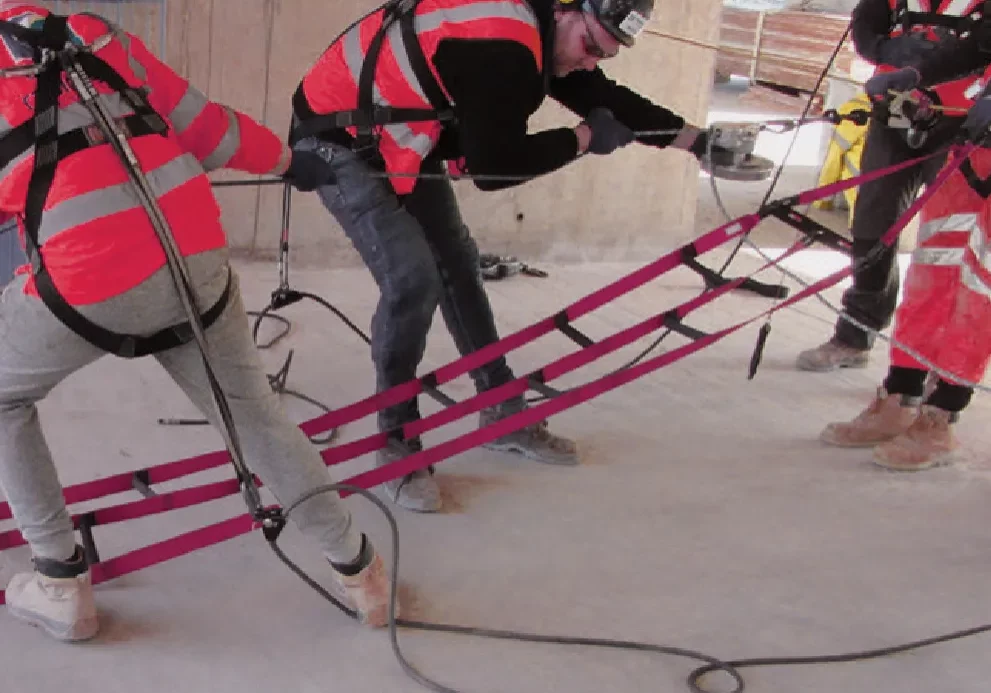
When operatives are suspended in mid-air after a fall, their lives hang in the balance – even if they have survived the fall without a scratch. Every second counts. The intention of this guidance is to help you fully understand the implications of an operative falling, being arrested and then being suspended by a harness, which initially saves them, but minutes later may kill them due to suspension intolerance. More than just helping to understand why this happens, this guidance will show what action should be taken to prevent a fallen operative from dying from suspension intolerance. It will also clearly outline the current law with which must be complied with to discharge our legal responsibility.
“Harnesses can become deadly whenever an operative is suspended for durations of over five minutes in an upright posture with the legs relaxed straight beneath the body.”
Common symptoms can include:
1) lightheadedness,
2) tingling or loss of sensation in the limbs,
3) difficulty in breathing,
4) excessive sweating,
5) feelings of nausea,
6) dizziness,
7) reduced blood pressure, and
8) potential loss of consciousness.
Within just five minutes, a person who has fallen is very likely to lose consciousness, yet those responding to the scene might not fully grasp how serious things are. In only ten more minutes, it could be too late, and a lifeless body might need to be retrieved. It is therefore critical to act fast and lower the victim to the ground immediately, then seek medical attention.
In June 2024, OSHA (US equivalent of the UK Health and Safety Executive) published a health and safety blog outlining the dangers of prolonged, upright suspension. The blog warned of the risk of “orthostatic intolerance “and “suspension intolerance” and refers to some of the potential health hazards – death being the chief one – experienced by operatives who are suspended upright by fall arrest equipment after a fall.

If the operative isn’t rescued quickly using the proper safety procedures, they may experience suspension intolerance due to orthostatic intolerance, which can lead to severe or even fatal injuries as vital organs like the brain and kidneys are deprived of oxygen. Many users of fall protection gear don’t realize the risks associated with suspension intolerance.
Suspension intolerance can lead to death due to orthostatic intolerance, which happens when blood pools in the veins (known as venous pooling). This condition can arise when someone has to stand still for extended periods, and it can be aggravated by heat and dehydration. The major blood vessels run through the leg muscles, and when these muscles contract, they help push blood back up to the heart. However, if the muscles remain inactive, gravity causes the blood to accumulate in the legs.
Eventually, blood can start to pool in the veins, leading to a decrease in the amount of blood returning to the heart’s right chamber. Since the heart can only pump the blood it has, its output begins to decline. To compensate, the heart tries to beat faster to ensure enough blood reaches the brain. However, if the blood flow to the heart itself is significantly limited, this increased heart rate and rapid breathing won’t help, and the body may suddenly slow down the heart, resulting in fainting.
When someone loses consciousness, they typically collapse and lie flat, which means they spend very little time upright while unconscious. This horizontal position helps improve blood flow, allowing the person to regain consciousness quickly and often recover swiftly. However, if a person is suspended in a harness that keeps their legs immobile, they can’t naturally fall into a horizontal position like they would when fainting. In this case, gravity causes blood to pool in the lower legs. Since the individual in the harness can’t shift to a horizontal posture, their heart rate decreases, leading to a drop in blood supply to the brain. This excessive pooling of blood can significantly lower both cardiac output and arterial pressure, which may critically affect the amount and quality of oxygenated blood reaching the brain.
This situation can lead to dangerously low blood flow not just to the brain, but also to other essential organs like the kidneys. The kidneys are particularly vulnerable to changes in blood oxygen levels, and there’s a genuine risk of renal failure due to excessive pooling of blood in the veins.
Injuries sustained from a fall, along with the shock of the experience, can worsen the onset and severity of venous pooling and orthostatic intolerance. Additionally, factors like fatigue, dehydration, hypothermia, cardiovascular issues, respiratory problems, and blood loss can contribute to these conditions. Remaining in a stationary position with the legs positioned below the heart for an extended period is particularly dangerous.
Operatives face considerable danger after a fall, through the lack of a thought-out, detailed and fully implemented rescue plan. It is a legal requirement of the ‘Work at Height Regulations 2005’ to have a rescue plan.
The most effective rescue approach is to take all necessary precautions to prevent falls from occurring in the first place. However, falls can and do happen, making a rescue plan a crucial part of the company’s overall fall protection strategy and risk assessment. Without a pre-established post-fall rescue plan, not only is the individual who fell at risk, but rescuers may also find themselves in danger. Unplanned rescue attempts can lead to additional injuries or even fatalities.
Height rescue training is vital for promoting safety when working at heights, ensuring your team is prepared for any emergency that may occur, and equipping the team with the necessary knowledge and skills required to operate effectively and safely at height.
Leading Edge height safety rescue training equips you with the essential skills to perform quick recoveries using descent, haul or winch rescue systems. These techniques work together to ensure that your team can safely raise or lower a fall victim from any challenging situation fast!
Discover more about our expert height safety rescue courses.
Copyright 2025 Leading Edge Safety. Devloped by Czargroup Technologies
